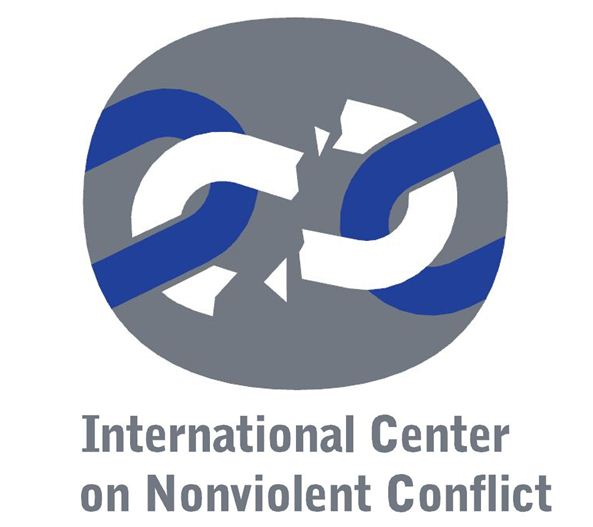India
This book was published soon after December 1997, when over 120 states (excluding the USA, Russia, China, India and Pakistan) signed the Ottawa Convention to ban production, stockpiling and use of anti-personnel mines. It provides a wide ranging survey of both the global campaign and the diplomatic moves culminating in the 'Ottawa process', which, under Canadian government leadership, resulted in the treaty. There are contributions from leading campaigners, diplomats and academics.
A chapter from Overy’s unpublished PhD thesis.
The interview examines the role of Asian garment workers in a ruthlessly competitive garment industry influenced by 'fast fashion', which intensifies pressure on workers through forced overtime and 'inhuman productivity targets'. The Asia Floor Wage Alliance was created to unite unions across the borders of countries such as India, Bangladesh, Pakistan and Sri Lanka competing for market share, to create a regional bloc able to negotiate with the global brands in the industry. The aim was to ensure there is a cross-border minimum wage which cannot be breached, though the aim is also to raise wages, which would only entail a small rise to consumers. There is now recognition of the principle of an Asia Floor Wage across the industry, supported by the International Labour Organization (ILO), but pressure on the brands is needed. AFWA works with other labour rights bodies and NGOs, and also has partners in Europe and the US, where the global brands have their headquarters.
See also:
http://awajfoundation.org/, https://ngwfbd.com/ and https://www.ilo.org/dhaka/Areasofwork/workers-and-employers-organizations/lang--en/index.htm (ILO-Bangladesh).
Discusses early resistance in 19th and 20th centuries and contemporary campaigns against destruction of forests, dams, pollution and over-fishing of seas, and mining. Akula also describes Jharkand separatist ‘tribal’ struggle to own their historic land and promote sustainable use of resources.
Examination of the grass roots work of the MKSS in developing campaign for right to information as part of their wider campaigning and their use of jan sunwals (public hearings) in communities where official documents regarding public works, anti-poverty programmes etc. are read out and people are encouraged to add their own testimony about diversion of funds and fraud. The article also covers the MKSS use of public protest, such as a 52 day sit-in in the capital of Rajasthan, Jaipur, in 1997. See also: 2005 Commonwealth Human Rights Initiative, Right to Information. State Level: Rajasthan, 2005 2005 . Brief elaboration and update on work of MKSS and Right to Information Acts up to 2005.
Lively sympathetic biography used as basis for Richard Attenborough’s 1982 film.
Analyzes the current feminist actors, organizations and debates around gender equality and feminist perspectives in order to provide an overview of feminist ideas and actors in India. It shows that feminism today is the constant questioning of the world we perceive and the boundaries we encounter.
Pays special attention to Ekta Parishad (an Indian land rights organization), the Assembly of the Poor in Thailand and MST in Brazil.
Analysis of Gandhi’s approach to conflict and struggle and of three of his campaigns in India; the 1918 Ahmedabad textile workers strike; the 1919 resistance to the repressive Rowlatt Bills, and the 1930-31 Salt March.
A large scale survey conducted in a representative sample of households throughout India. It reports that 30% percent of women aged 15-49 in India have experienced physical violence since age 15, amongst many other forms of violence or discrimination, and the social context that makes it difficult to challenge. The National Family Health Survey 2018-2019 is yet to be published.
Indian journalist’s account of the continuing unarmed protests
This paper argues that in principle there is a potential for market reforms to benefit farmers, but that the farm laws passed by the government will in practice benefit 'traders' rather than farmers. Deregulation without 'enabling preconditions' is not likely to help farmers, and may prove counterproductive.
This is an acadmeic contribution to memory studies, but shows how preserving knowledge and stories of past movements affects present politics, and how nonviolent activists can learn from past campaigns. Examples examined include the suffragettes, Greenham Common, Polish Solidarity, US struggles against racism and Australian aboriginal campaigns. The authors also illustrate how one movement can influence others and stress the need to make archival and other sources (films, music, etc.) available.
Main focus on 1930-31 independence campaign, but also covers peasant struggle in Chamaparan 1917-18, and Gandhi’s 1948 fast in Delhi against inter-communal killings linked to partition.
Primarily an exposition of Gandhi’s theory of democracy, but commenting on Hazare’s anti-corruption movement as a starting point.
Scholarly critical biography drawing on 90 volumes of Gandhi’s writings, arguing Gandhi aspired to be a world saviour. Author comments on inaccuracies in Gandhi’s own account of the South African campaigns, and provides incisive analysis of Gandhi’s political role and campaigns in India.
This is the second volume of massive biography by the eminent contemporary Indian historian re-evaluating Gandhi's life, ideas and role. It is published at a time when Prime Minister Narendra Modi is rehabilitating the far right Hindu nationalists in the Rashtriya Swayamsevak Sangh (an individual linked to the RSS assassinated Gandhi), and when Gandhi is often vilified. This volume is broadly sympathetic to Gandhi, though not uncritical, and gives weight to the influence of his secretary Mahadev Desai.
The first, widely praised, volume Gandhi Before India, which covers all of Gandhi’s life to the end of the South African campaign, was published by Penguin Random House in 2015.
See also Guha, Ramachandra, 'Remembering Vaikom satyagraha in the light of Sabarimala', The News Minute, 6 Januray 2019.
Commentary by prominent Indian public intellectual, and author of books on Gandhi, at the time of the 2019 mass protest by women in Kerala against a Hindu temple refusing to admit them. Guha responds by recalling the 1924-25 campaign (in which Gandhi played a role) to persuade the Vaikom temple to admit dalits (untouchables).
A collection of essays by feminist scholars and activists in South Asia outlining the development of feminism in India, Bangladesh and Pakistan over the last decade with regard to the social embodiment of women, television representations, LGTB discourses, domestic violence, and the “new” feminism.
Author lived in squatter communities in Rio, Bombay, Nairobi (where squatting was linked to building new homes) and Istanbul.
Largely based on the author’s PhD thesis, this book analyses three historical approaches to civil disobedience, from conservatives and liberal philosophies to the applied theory of disobedience derived from Gandhi and Martin Luther King.
Introduces radical geography perspective on spatial components to sites of resistance. Chapter 1 looks at the developing resistance to aspects of economic development (industrialization, dams, deforestation) and the numerous movements since independence among tribal peoples, peasants, women and squatters. Chapters 3 and 4 analyse the Baliapal movement against a missile testing range, and the Chipko movement against logging.

 The online version of Vol. 1 of the bibliography was made possible due to the generous support of the
The online version of Vol. 1 of the bibliography was made possible due to the generous support of the  The online version of Vol. 2 of the bibliography was made possible due to the generous support of
The online version of Vol. 2 of the bibliography was made possible due to the generous support of